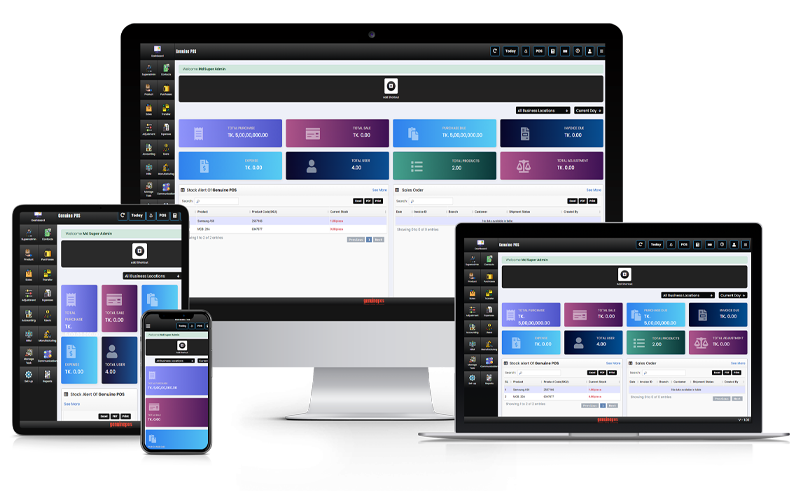
Point of Sale (POS) system is a combination of hardware and software designed to streamline the process of transactions and manage various aspects of a business’s operations. It serves as the central hub where customers make payments for goods or services, and businesses can process these transactions efficiently. Here are the key components of a typical POS system:
Hardware for POS:
- Cash Register or Terminal: The device where the sales transaction is initiated and completed.
- Barcode Scanner: Used to quickly and accurately scan product barcodes for pricing and inventory management.
- Receipt Printer: Prints a receipt for the customer as a record of the transaction.
- Credit Card Reader/Debit Card Reader: Allows electronic payment processing, commonly using credit or debit cards.
- Cash Drawer: Securely stores cash collected during transactions.
Software module of POS:
- Point of Sale Software: The application that runs on the POS hardware and manages the entire sales process. It includes features for transaction processing, and inventory management, and often integrates with other business software.
- Inventory Management: Tracks and manages stock levels, alerts for low inventory, and provides insights into product performance.
- Sales Reporting: Generates reports on sales trends, transaction history, and other key performance indicators.
- Employee Management: Manages employee access, tracks sales made by each employee, and monitors productivity.
- Customer Relationship Management (CRM): Helps businesses track customer information, preferences, and purchase history.
Payment Processing in POS system:
Integration with Payment Gateways: Connects the POS system to payment processors, enabling secure transactions and supporting various payment methods such as credit cards, mobile payments, and more.
PCI Compliance: Adheres to Payment Card Industry Data Security Standard (PCI DSS) requirements to ensure secure handling of payment information.
User Interface:
Intuitive Interface: Designed for ease of use by cashiers and other staff members to facilitate quick and accurate transactions.
Touchscreen Displays: Commonly used for modern POS systems to enhance the user experience.
Security Features:
User Authentication: Ensures that only authorized personnel can access the POS system.
Data Encryption: Protects sensitive information, especially during payment processing.
Regular Software Updates: Addresses security vulnerabilities and ensures the system is up-to-date.
Cloud Connectivity:
Cloud-Based POS Systems: Some POS systems operate in the cloud, allowing businesses to access data remotely and offering scalability.
Overall, a POS system is a crucial tool for businesses in the retail, hospitality, and service industries, providing a streamlined and efficient way to manage sales and related operations.

